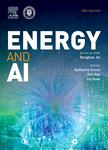版权所有:内蒙古大学图书馆 技术提供:维普资讯• 智图
内蒙古自治区呼和浩特市赛罕区大学西街235号 邮编: 010021

作者机构:Korea Univ Dept Chem & Biol Engn 145 Anam Ro Seoul 02841 South Korea Tianjin Univ State Key Lab Engines Tianjin 300350 Peoples R China Int Cooperat Res Ctr Carbon Capture Ultralow Energ Tianjin 300350 Peoples R China Korea Univ Sch Elect Engn 145 Anam Ro Seoul 02841 South Korea MIT Dept Chem Engn Cambridge MA 02139 USA
出 版 物:《ENERGY AND AI》 (Energy. AI.)
年 卷 期:2025年第20卷
核心收录:
基 金:Key Project of Natural Science Funds of Tianjin City [22JCZDJC00540] Schmidt Science Fellows Program by Schmidt Sciences Rhodes Trust
主 题:Materials informatics Machine learning Large language models Context-based modeling Solid amines Direct air capture
摘 要:Traditional materials informatics leverages big data and machine learning (ML) to forecast material performance based on structural features but often overlooks valuable textual information. In this work, we proposed a novel methodology for predicting material performance through context-based modeling using large language models (LLMs). This method integrates both numerical and textual information, enhancing predictive accuracy and scalability. In the case study, the approach is applied to predict the performance of solid amine CO2 adsorbents under direct air capture (DAC) conditions. ChatGPT 4o model was used to employ in-context learning to predict CO2 adsorption uptake based on input features, including material properties and experimental conditions. The results show that context-based modeling can reduce prediction error in comparison to traditional ML models in the prediction task. We adopted Sapley Additive exPlanations (SHAP) to further elucidate the importance of various input features. This work highlights the potential of LLMs in materials science, offering a cost-effective, efficient solution for complex predictive tasks.